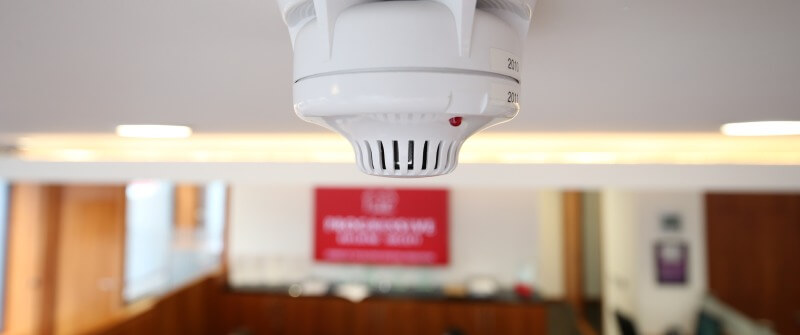
Fire accidents are amongst the worst incidents and quite scary. According to the Home Office’s online Incident Recording System (IRS), fire and rescue services (FRSs) in England attended 153,957 fire incidents during the year ending on March 2020. Of this 42% of incidents reported were caused by false fire alarms. With such a huge percentage of false incidents, it is important to be able to focus on the real fires that need attention and reduce the number of false fires reported.
False fire alarms can disrupt your peace of mind and also the community’s. It also diverts the attention of responders from genuine emergencies.
So, what causes these false alarms and how can we minimise this? For this, we need to look at how smoke detectors/alarms work.
How do smoke detectors work?
There are primarily 2 types of smoke detectors – ionization smoke detectors and photoelectric smoke detectors.
Ionization smoke alarms are more responsive to flaming fires. These have two electrically charged plates which have a small amount of radioactive material between them that ionizes the air and causes current to flow between the plates. When smoke enters the chamber the flow of ions is disrupted, this reduces the flow of current and activates the alarm.
Photoelectric smoke alarms usually respond more to fires that begin with a long period of smouldering. These alarms use a light source which is directed into a sensing chamber at an angle away from the sensor. When smoke enters the chamber, light is reflected onto the light sensor, thus triggering the alarm.
Though both of these smoke alarms detect smoke they are naturally susceptible to malfunctions.
Causes of false fire alarms
A number of reasons may be behind false smoke alarms. The most common or main causes are:
- Poor building maintenance
- Inappropriately placed and installed detectors – like placing smoke detectors in an area where there is excessive air movement due to mechanical heating, ventilation or open windows can cause false alarms
- Dirty detectors that are not frequently cleaned and serviced
- Steam and aerosol sprays (like deodorants and hair sprays)
- Cigarette smoke and candles
- Damaged fire alarm systems.
- Cooking fumes detected by a detector in an adjacent area. For example, a smoke detector located in a corridor outside a kitchen can cause the detector to go off due to burnt food.
- Not using the right type of detector to protect an area.
- Building works can cause electrical disturbances and affect the fire alarm system.
- Pesky small insects that can enter the smoke detector and interfere with the alarm
Though these are some of the main causes, they are not the only ones.
Steps to reduce false fire alarms
These simple solutions can be implemented to ensure that the frequency of false alarms is reduced.
- Do not smoke near detectors and do not directly spray aerosol spray at smoke
- Switch on exhaust fans and open vents or windows before cooking, showering or using strong chemicals at home.
- Know where the detectors are installed and take measures to avoid false fire alarms
- Ensure that bathrooms and kitchens are ventilated and appropriate fan/ventilation is installed
- Make sure that safe cooking practices are followed and if the alarm near the kitchen is too sensitive and activates every time you cook, make sure that the sensitivity is adjusted accordingly.
- Understand that dust and fumes can build up on the detectors and cause false alarms, and keep them cleaned accordingly.
- Maintain and service fire alarms regularly.
- Try upgrading the smoke detectors to a smart smoke detector.



